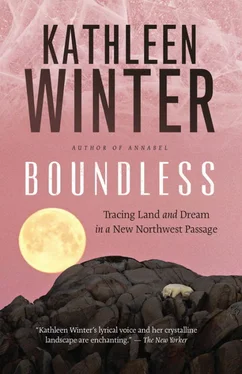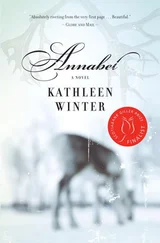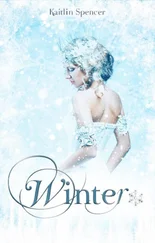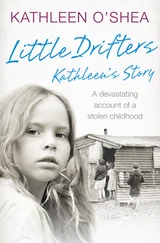“What was the main reason we came to Canada?” I asked him in the car. I knew he’d left Les Lakey and Joe Cramm behind, friends with whom he’d bred goats and hitchhiked to Coldstream and sung in pubs, and I knew my mother hadn’t known how hard it would be to watch her father grow old and blind and ill and then die from across the ocean. I knew my dad was happy to have left England and he always said he had no regrets, but I wanted to hear him tell me why he’d left everything familiar.
“Freedom,” he said, as if any fool knew that. “Every stick in England was owned and accounted for, and still is.”
You find out things about your parents when they wish you to do so, or as you gain perspective, or as they tell stories to your kids that they never got around to telling you. My dad told Esther, my daughter, how he saw the Beatles at the Cavern Club before they were famous. He told my daughter Juliette that as a boy he longed to be a mechanic but on the day of his apprenticeship the master mechanic found out he was forbidden to take a student because he had no toilet on the premises, so my dad became a plumber at the shipyard instead. Later he became a woodworker, designing mahogany sideboards and tables as well as refinishing and making replicas of Queen Anne and other period desks, chairs, and divans. He taught woodworking for years, then had his own furniture business for a long time after that.
“How did you learn to make furniture, Dad?”
Again, that look — how could a child of his be so obtuse? “I learned it from books.”
“But books, Dad — can’t learn anything three-dimensional from books. Someone has to show me.”
“Well, I learned a lot of what I know from books.”
I remembered piles of books on the coffee table he’d made, and on the bookshelf he’d built: books on refinishing wood, on joinery and upholstery, as well as on mysteries of the Mayan pyramids and on polar exploration. A Punjabi doctor had entrusted him once with refinishing a divan of carved ebony, an ancient piece transported from Kashmir, and he studied how to do it and then he went ahead.
“If you have a visitor,” he told me when I was small and he was buttering me some toast, “and you give that visitor bread and butter, make sure you butter the bread right to the very edges.”
With pieces of walnut left over from the legs of a chair, he carved Adam and Eve. He made a cat ready to pounce, copper vases, enamelled dishes, and a kaleidoscope of glass and mirrors with purple, gold, and green starbursts of crumpled Quality Street toffee papers. He taught me how to hammer and cut scrap copper pipe and powder it with enamel designs and fire it in a kiln to make necklaces, and offered to teach my daughter to do it too. He taught me how to make hooked rugs out of coffee sacks and rag strips and a hook made from a filed nail hammered into the handle of an old rolling pin. But one thing he made was different from all these other things, and I wondered about it for a long time, and I still do.
I was in junior high school at the time; he was still in his thirties. All of a sudden he took to sitting in his leather rocker with a board and a tray of grey, tan, green, and blue paints in plastic vials, working on a paint-by-number painting of men in a sailboat. I remember the myriad blue outlines he had to daub with a tiny brush, each with a blue number printed inside. It was a solitary effort that went on for weeks, maybe months. He didn’t mind my watching him so it became a quiet ritual: I’d kneel on the carpet watching the boat, the sails, and the ocean waves emerge out of seemingly unconnected scraps of colour: here was light, here was shade. The rest of the household continued normally around this calm, oceanic centre — my mother rolling pastry beyond the hatch in the dining room, through which we could see one square of the kitchen; my brothers beating each other to a pulp and watching Get Smart, or playing Risk and G.I. Joe. I can smell the linseed oil now. How monochromatic the colour choices seemed to me — where were red and purple? How could anything transform into a scene with those limited hues? Yet it did, and the painting went on the wall above my mother’s sewing machine table, where it still hangs.
I wondered about the painting because it didn’t fit in with all the other things my dad designed or made from scratch. What had made him devote so much time, his most precious resource, to doing something that, to my mind, seemed little more creative than a jigsaw puzzle? I’d forgotten, with the teenage superiority my daughter now exhibits so exquisitely toward me, that when my dad made this painting of men braving the sea, he’d already left everything he knew behind in the Old World. Only a few years prior to working on the painting he’d voyaged to a new-found land which to his British friends, his mother and perhaps his father, and anyone he’d ever known, represented the ultimate in wilderness and unknown possibility. His mother had said to me before our family left England, “When you get to that place, watch out for bright green grass. It isn’t grass, it’s bog, and if you walk on it, it can swallow you.”
“Freedom,” my dad told me, was what he sought in Canada; and what exemplified freedom more than sails in the wind on an open sea? I found out, with time, that his painting wasn’t some random image sold in Woolworths near the jigsaw puzzles and Phentex yarn. The image was based on one of the most famous American paintings in existence, the Winslow Homer piece originally called A Fair Wind , first shown in 1876 at America’s centennial exhibition and renamed Breezing Up by critics and a public who saw in it the New World’s dream of boundless invention and discovery.
“Yes,” my mother said, when I asked her about our emigration. “It was exciting, the New World and all that. But maybe we didn’t realize, about you, the children, we were removing you from your roots.” Yes — hadn’t I left Rhona and Deborah to play elastic skipping without me on Hainingwood Terrace? Hadn’t the Newfoundland kids dragged me behind the school at recess and taught me how to lose my Geordie accent and speak like a Newfoundlander?
In my twenties I’d lived in a fishing outport, in search of surrogate grandparents among the old fishermen and their wives who still made jam and told old-time stories over the turnip-garden fences. The first greeting from any such acquaintance was, “Where do you belong?” No xenophobic unfriendliness, this was an age-old greeting that really meant, “From where have you come, kind stranger?” But when you’ve left a country behind as a child, you don’t know where you belong. You constantly try to put down roots but they won’t hold the way they would have had your father done as generations of his people had, and stayed where he was born. You remain in a state of slight yet constant unbelonging, a rootless unease that can remain incurable in the new land unless something happens to change everything.
Maybe my father re-painted Winslow Homer’s image so he could learn how to make an oil painting: how does one transpose a three-dimensional scene onto a board? How do you create chiaroscuro and depth of field? Was he experimenting as he had done while teaching himself to make desks, cabinets, and enamelled copper pieces? Or was the painting’s New World spirit of discovery the lure that attracted him?
I’ve never asked him. But I know that in 1876, while A Fair Wind hung at the first official World’s Fair, the steamer Pandora sailed from Southampton in its second search for the lost Franklin expedition. Jane Franklin had died eleven months before, after funding seven previous searches. But her death did not end the search expeditions, which continued beyond that first World’s Fair, through the nineteenth and twentieth centuries, and into my own twenty-first century journey through the Northwest Passage, imbuing it with an excitement every passenger on our ship sensed. Franklin and his ships had never been found: they accompanied us in the Arctic night, perhaps closer than many of us dared think.
Читать дальше












